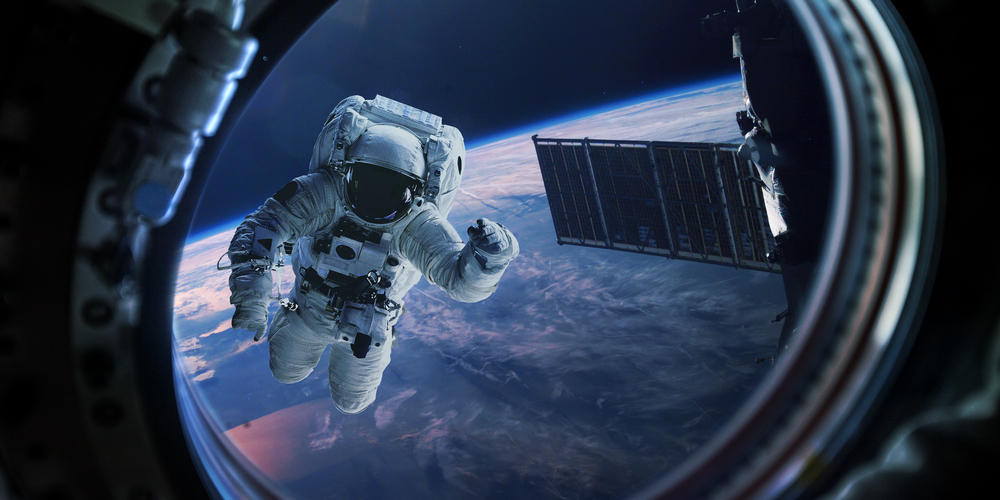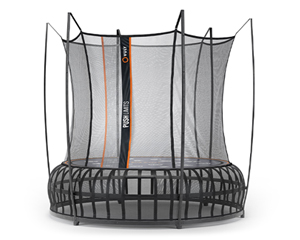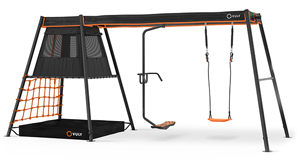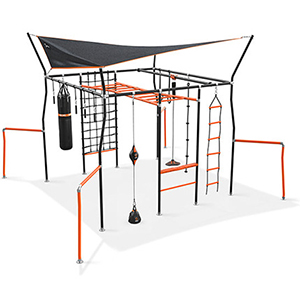Space Trampoline - Astronaut Training For Space & Zero Gravity
Oct 12, 2017
3 mins
Australia has recently announced that it'll be joining in the space exploration movement with its very own space agency! With our New Zealand neighbours already well ahead of us with their own national space agency, we Aussies clearly felt that a space program was well overdue.
Space exploration is something that continues to fascinate us, and while the technical side of things is exciting, it’s also really interesting to look at how astronauts prepare for venturing off our little rock and out into space – and how trampolines play a part in all of it!
Learning how to navigate the suit and space
Getting used to zero gravity and learning how to navigate life in a bulky suit are all part of space training. Not only will astronauts-to-be engage in exercises where they are underwater in a space suit for up to seven hours at a time, they'll also simulate zero gravity primarily flying in a jet at super-fast speeds before going into free-fall for around 25-30 seconds.
Nicknamed the ‘Vomit Comet’ for its nausea-inducing properties, it’s unclear whether this is still the current method de rigueur for inducing weightlessness, or if NASA has since figured out more sophisticated methods. At home, you can experience some of this weightlessness on your humble backyard trampoline!
Space trampolines and astronauts
The use of trampolines in astronaut training began after a study from 1980 on the benefits of ‘rebounding’ (basically just jumping on a trampoline). The problem was that astronauts were at risk of suffering a range of health problems after re-entering Earth’s gravity – due to the strange and incredible powers that had been exerted on their bodies in space. One of the most troubling forces at work was – of course – gravity, with the effect being a reduction in bone density that can leads to fractures and all sorts of other complications.
NASA was having none of it; they decided to find an exercise that would combat the negative effects of low gravity. The resulting study found that bouncing on a trampoline was a hugely efficient and effective way to get exercise. Not only does the momentary weightlessness cause myriad health benefits, but it’s also a more effective method of exercising than – for example – running on a treadmill.
When testing the the athletes in the study, NASA found that, when running on a treadmill, the 'impact' on the ankle was twice what it was at the back and the head. When compared to bouncing on a trampoline, the 'impact' was almost identical at the ankle, back and the head – and at a lower overall level than a treadmill. What this shows is that trampoline exercise can be hugely beneficial without putting excess pressure on your feet and legs. If you have an injury, trampolining might be just the thing for you!
If you have ever wanted to train like an astronaut, know that the humble backyard trampoline may be just the way to get there!

How astronaut trampoline space training works
The study itself is immeasurably dense, so we've taken the liberty of extracting the most important elements and reproducing them here for you.
When you jump on a trampoline, a few things happen. There's:
- Acceleration as you bounce up,
- A moment of weightlessness as you reach the top of your bounce,
- A deceleration at an increased G-force (gravitational force), and
- Impact on you as you reach the trampoline
This repeats until you’re all bounced out!
When you’re on a trampoline, every single cell in your body has to respond to the forces being exerted on it – which is a real workout. The up and down motion may also help drain your lymphatic system – which removes toxins and metabolic wastes from your body.
A key benefit, though, which science is totally behind, is found in the skeleton. When you’re bouncing on a trampoline, the increased G-forces help build bone density. It's why astronauts who have returned from space and those who suffer from osteoporosis alike use trampolines!
Bottom line? If you’re at all sick of running on the treadmill (we know we are), then get like an astronaut and bounce on a trampoline to enjoy the health and physical benefits immediately. See our trampoline range online and discover the benefits a Vuly Play trampoline can have in your life.

























































